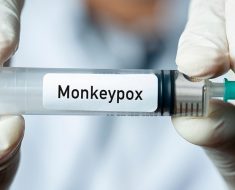An international team that includes Rutgers scientists has made significant progress in developing a urine diagnostic test that can quickly, easily and inexpensively identify tuberculosis infection in people also infected with HIV. TB is the leading infectious disease killer in the world and the most common cause of death for people living with HIV, although most TB deaths can be prevented with early diagnosis and treatment.
The findings were announced at the September 26, 2018, United Nations meeting on TB.
Abraham Pinter, a professor in the Department of Medicine and the Public Health Institute at Rutgers New Jersey Medical School, has been part of the ongoing study led by The Foundation for Innovative New Diagnostics (FIND).
“TB is a major concern in the poorer sections of the world,” said Pinter. “So, in addition to being effective, the test also must be inexpensive, simple to use and interpret and not rely on instruments or even electricity. Additionally, the results need to be obtained quickly, before the patients leaves the clinic, so that they can be started on drug therapy as soon as possible, thus reducing the chances that they spread the infection.”
Pinter said that a promising TB diagnostic test was developed a number of years ago that detected a glycolipid antigen called lipoarabinomannan (LAM) in the urine of some actively infected patients. The test used a lateral flow platform, similar to a dipstick used for pregnancy tests. Urine samples are very accessible, and such tests are easy to perform, and highly suitable for low-income settings. Unfortunately, the existing test had limited sensitivity and proved useful among only a small fraction of very sick patients co-infected with HIV, who also were severely immunosuppressed.
In the new study, scientists and clinicians from Rutgers, FIND and other institutions showed that the new assay was considerably more sensitive than the existing assay, and had a similarly high level of sensitivity. A key component of the new assay was a novel monoclonal antibody isolated in the Pinter lab from infected patients that strongly recognized the form of LAM present in urine.
Source: Read Full Article





